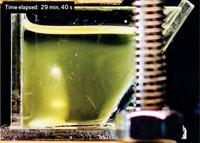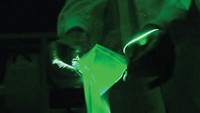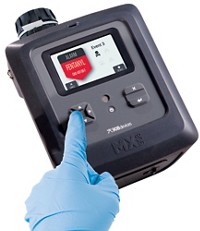Advertisement
Grab your lab coat. Let's get started
Welcome!
Welcome!
Create an account below to get 6 C&EN articles per month, receive newsletters and more - all free.
It seems this is your first time logging in online. Please enter the following information to continue.
As an ACS member you automatically get access to this site. All we need is few more details to create your reading experience.
Not you? Sign in with a different account.
Not you? Sign in with a different account.
ERROR 1
ERROR 1
ERROR 2
ERROR 2
ERROR 2
ERROR 2
ERROR 2
Password and Confirm password must match.
If you have an ACS member number, please enter it here so we can link this account to your membership. (optional)
ERROR 2
ACS values your privacy. By submitting your information, you are gaining access to C&EN and subscribing to our weekly newsletter. We use the information you provide to make your reading experience better, and we will never sell your data to third party members.
Analytical Chemistry
Mass Spec May Bring ‘Bath Salts’ Bust
ACS Meeting News: Isotope ratio analysis traces feedstock fingerprints in drug syntheses
by Carmen Drahl
September 9, 2011
Analyzing elements’ isotope ratios can authenticate wines and cheeses, as well as expose clandestine labs where illicit drugs such as cocaine are made. Now, chemists report that this strategy also has the potential to detect the provenance of complex designer-drug mixtures known as bath salts, which provide users with a high but remain legal in many U.S. states. In May, Oliver B. Sutcliffe, Niamh Nic Daeid, and colleagues at the University of Strathclyde, in Glasgow, Scotland, published the first reliable liquid chromatography test for mephedrone, a common ingredient in bath salt powders (J. Pharm. Biomed. Anal., DOI: 10.1016/j.jpba.2011.05.022). They have now used isotope-ratio mass spectrometry to trace several structurally related substances in simulated bath salt samples, including mephedrone and methylenedioxypyrovalerone, back to their starting materials. The proof of the pudding, Sutcliffe said, would be to do the same thing with street samples, something the team plans to work on soon. He added that the team can identify the components of street samples with NMR, but he noted that NMR instruments are far rarer in forensic labs than are mass spectrometers and that the technique cannot link drugs to manufacturers.






Join the conversation
Contact the reporter
Submit a Letter to the Editor for publication
Engage with us on Twitter